There is undeniable appeal to running AI tools on your own computer, versus relying on online services offered by big tech players like OpenAI, Google, or Meta. But since most are published with software developers in mind, installing AI apps locally can get very complicated, very fast. (We have step-by-step guides for Stable Diffusion and FaceFusion, for example.)
It's not hard to get lost while trying to find the AI models that are compatible with your computer, navigating a bunch of Github code repositories, copy-and-pasting weird commands into a command-line terminal, then untangling pruned, quantized, FP16 or FP8 or whatnot. There are tutorials out there, but they can't cover every edge case, and get obsolete fast.
Could installing AI locally be as simple as clicking a button? Yes, say the makers of Pinokio, a new, user-friendly tool that is making waves in the open-source AI community.
Pinokio is a Swiss Army knife for AI. It lets you run tools like image generators, video generators, music generators, uncensored AI chatbots, intelligent mirrors, and a whole lot more. And it can manage all this on your computer, for free. Provided you have capable-enough hardware, of course.
Every one of the complex things that you used to do before Pinokio does for you automatically. With a few clicks, you'll be off and running.
What is Pinokio?
Pinokio is an AI browser that simplifies the installation and use of various AI applications and models on your local computer. Designed to be an all-in-one AI library downloader and manager, it consolidates the most popular open-source AI apps and puts them into a single environment, merging all the installation and configuration steps into simple scripts, running them with minimal user interaction.
Pinokio features
1. One-click installation: Pinokio allows you to install AI engines ranging from language models to visual tools like like Stable Diffusion with just one click. There's no need to worry about dependencies and custom environments.
2. Wide availability of open-source AI models: Pinokio provides a robust catalog of installation scripts for leading open-source AI applications currently available, making it easy to find popular and new models and install the most up-to-date versions.
3. One-click launch: Once AI apps are installed, you can fire them up them with one click. They run locally on your machine, so no internet connection is needed unless a specific app requires external API access.
4. Browser-based controls: The applications are managed through a standard browser window. Pinokio provides a web view for many AI chatbots, Stable Diffusion, and other AI tools.
5. Virtual computer: Pinokio is designed to be an autonomous virtual computer within your computer that can read, write, process, and execute anything through a simple scripting language.
6. Privacy-oriented: All models run locally, and users don’t need to share any information with Pinokio. This means users don’t have to worry about sharing their data, being monitored, or otherwise being constrained by centralized, corporate AI developers.
Installation

Installing Pinokio is as straightforward as installing any other program or app. Just go to the official Pinokio website at pinokio.computer click the “download” button, select your operating system, and run the installation file.
There is an additional step for Mac users, and yes, it is a terminal command. After you download the MacOS installer—a DMG file—and drop the "Pinokio" app into your Applications folder, you'll need to run the "patch.command" before opening the main app.
Linux users must select the proper installation file according to their Linux distro and install it as usual. All the installation files are in this Github repository: https://github.com/pinokiocomputer/pinokio/releases
Use Pinokio to install your first open-source AI model
Once Pinokio is installed, it’s time to explore. Pinokio lets you download and run any open-source AI app, as long as your computer can handle it.
Remember, running AI apps usually requires a GPU with huge amounts of vRAM. So, if you want to play with AI, don't just buy the most powerful GPU. Instead, go with the most capable GPU. (We explain more here.) Invest in a GPU that has the most vRAM, in other words: 6GB is enough for running Stable Diffusion, but 12GB is a more flexible starting point for running some heavier models—or training your custom LoRAs or SD 1.5 models.
Now it is time to navigate and run some AI apps. The process is the same for Windows, Mac or Linux.
The first time you open Pinokio, you’ll see a simple, mostly blank screen.
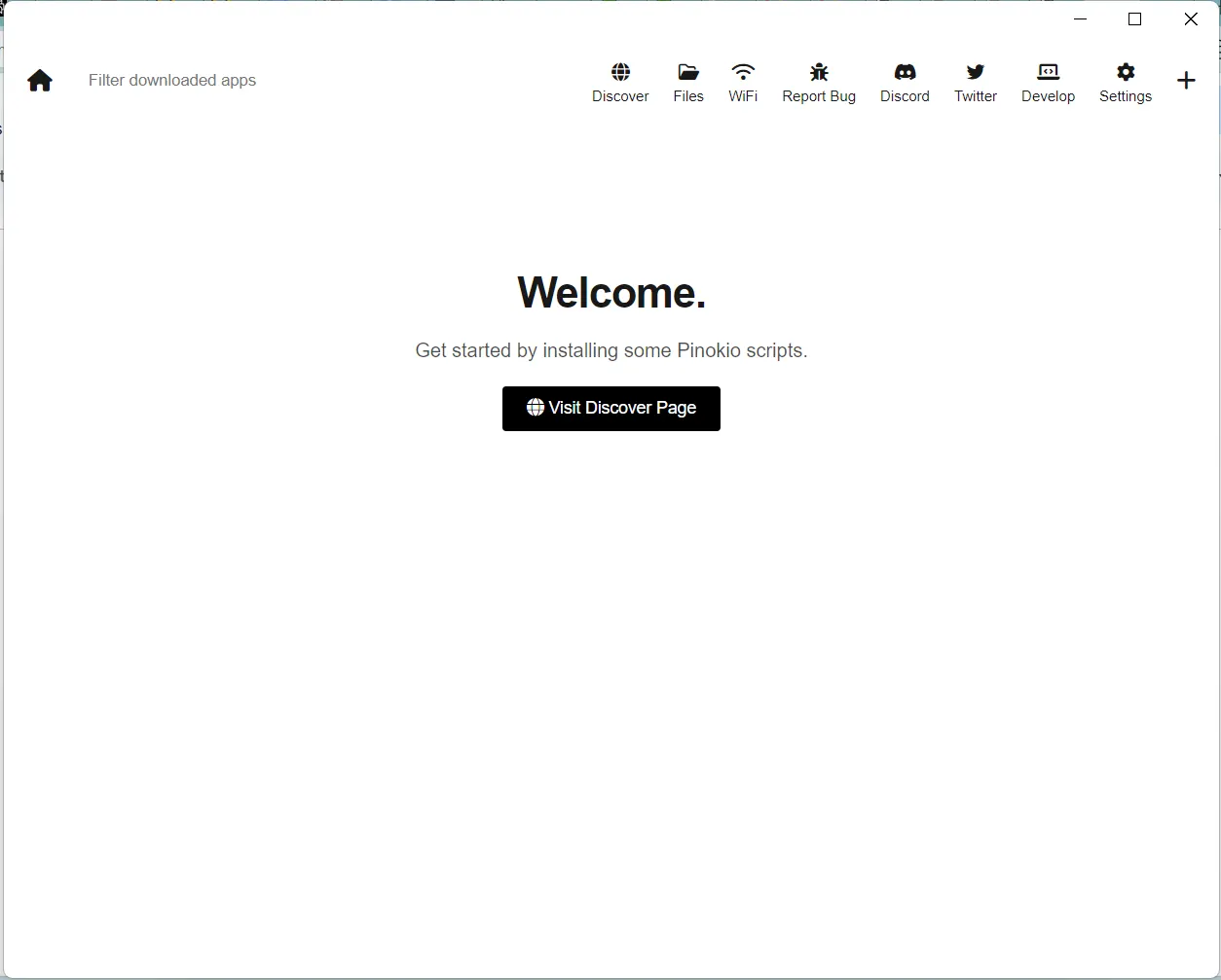
To explore the AI catalog, click the “Discover” tab along the top, or click the “Visit Discover Page” button. Pinokio will take you to a catalog of all the open-source AI models that you can run, each one with a corresponding image and description.
Take a look around and find something you like. The ones we would recommend if you are just starting out are:
- Fooocus (easy-to-use image generator)
- Facefusion (deepfake generator)
- SillyTavern (interact with LLMs)
- ComfyUI, Invoke or Stable Diffusion WebUI (these three are also image generators)
The latter three image generators are a bit more complex than Fooocus, but they support SD 1.5, which uses less VRAM. If you have a beefier PC and want to tinker a little bit more with AI, you may want to download:
- Openvoice (a voice cloner)
- Devika (a multimodal AI agent capable of coding)
- Moore Anymate Anyone or Stable Video Diffusion (AI video creation)
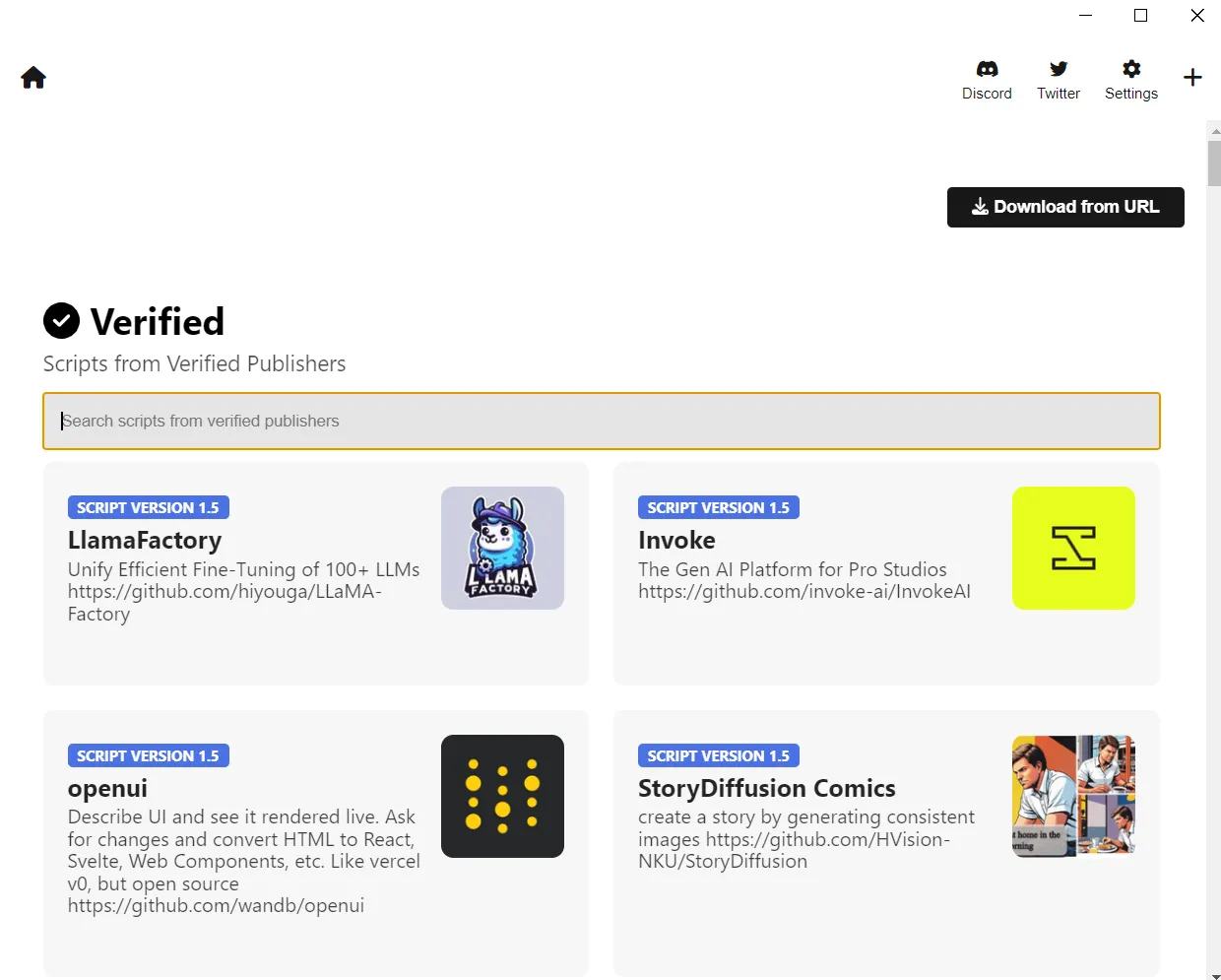
The catalog section looks like this:
In this example, we’ll install Illusion Diffusion, which basically generates an image that is also an optical illusion. However, the steps are exactly the same for any model you download.
Once you click on the app you want to install, it will take you to a new screen with basically just one button to press. It says “download”—so click it to do so.

Once you select the model, it will ask you to provide the name you’d like it to use. You can let the default choice and click “download” once again.

Pinokio will open a command prompt and download the script that will let you run the model. This occurs quickly and you’ll know it’s done because the command line says “done.”
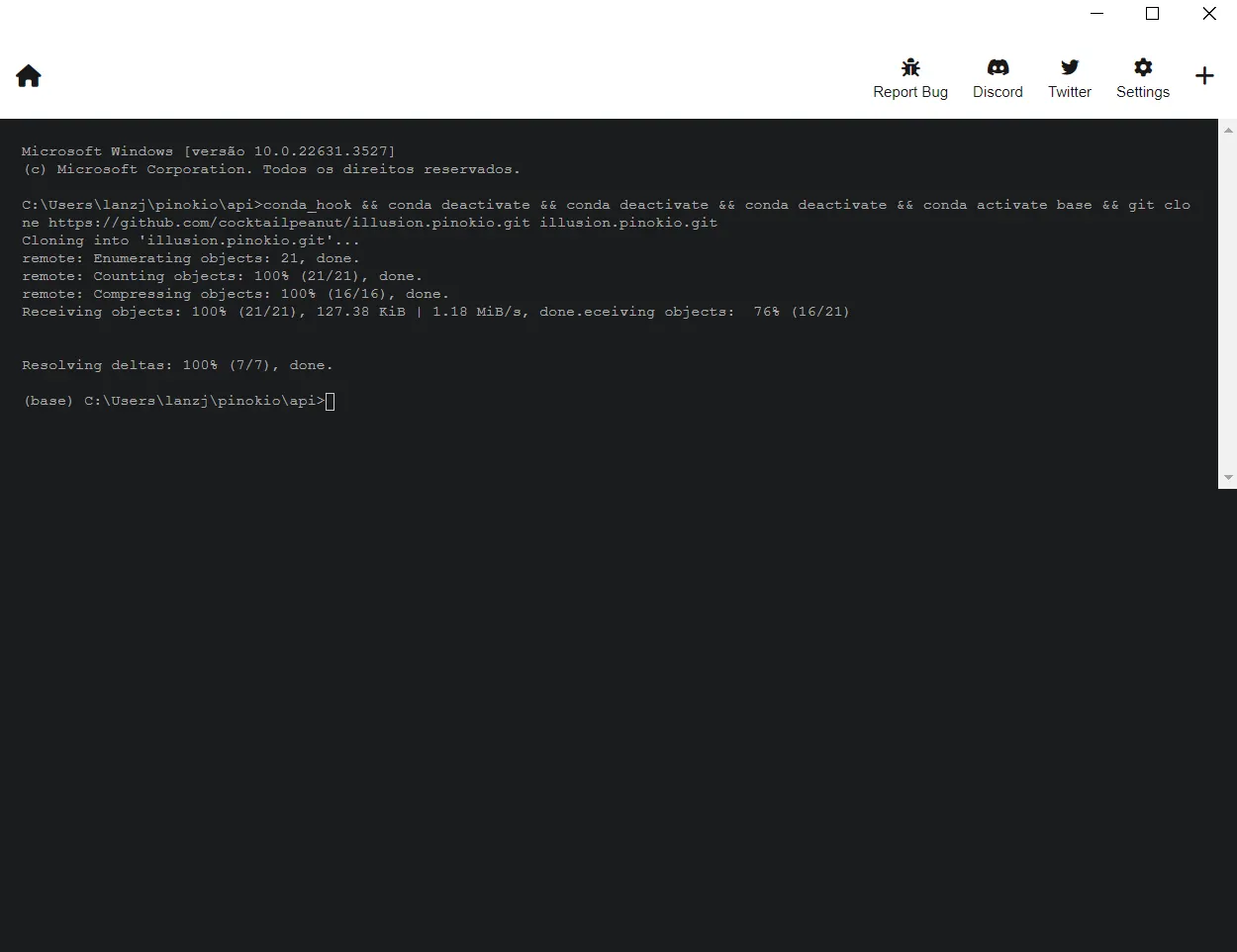
After it is finished, a new blank screen will appear. Note that it now displays the logo and name of the AI model you requested—in this case Illusion Diffusion—and three buttons: Delete, Files, and Install. Right now you want to click “Install.” However, "Delete" would uninstall the model and "Files" is used to explore the installation folder and mess around with files and folders—something you might do to add new checkpoints or LoRas if you installed Stable Diffusion.
The screen looks like this:

Now, as soon as you click "Install," another command-line screen like the one below should appear. While Pinokio does all this work for you, it may take some time to do it. Just wait and let Pinokio do its thing. It will download a lot of files, models, and libraries required to run your model. It will also set up environments and perform all the weird tweaks that are required to run your models on your machine.
For transparency, you can audit everything in the command-line terminal window to see what's happening if you want.
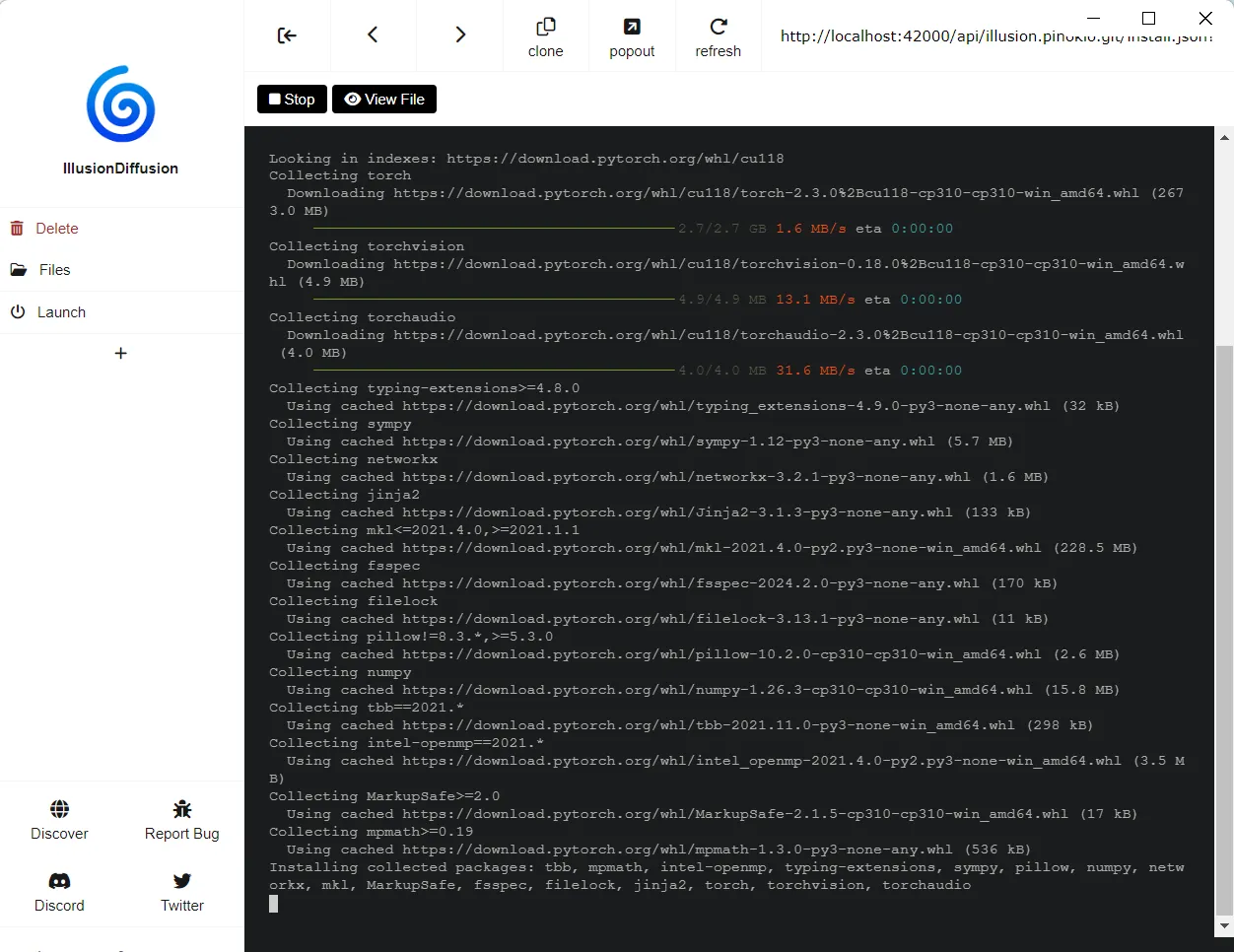
Pinokio will let you know when it’s safe to proceed to the next step with a nice popup letting you know that the installation was successful.
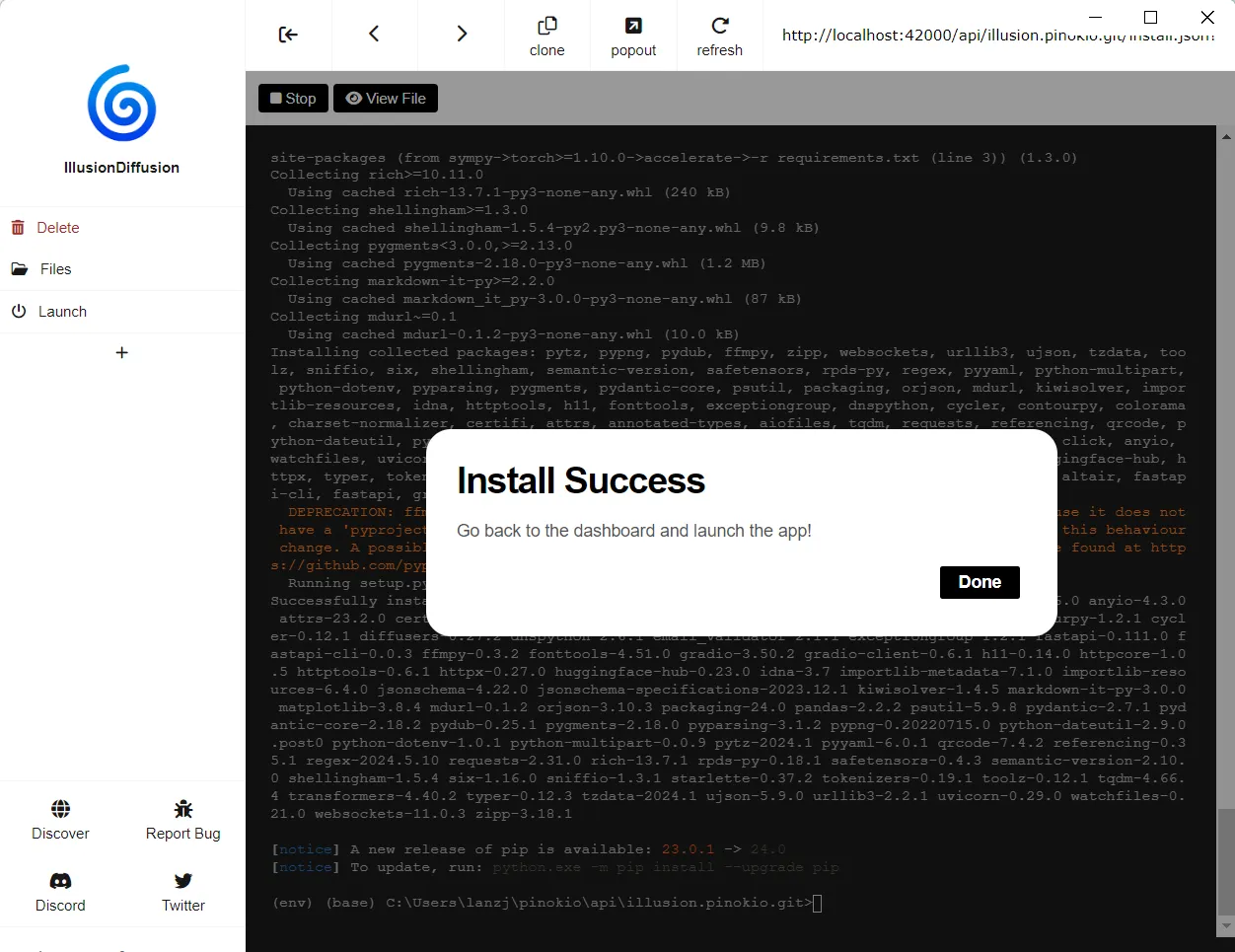
Now that everything is installed, click the little plug icon on the left of your screen to launch your model.
Don’t worry if you see yet another command line—it’s all part of the set up process. You should be used to waiting by now, so beware, you’ll probably have to wait some more.

Once it is done, Pinokio will give you a local URL to run your model in your web browser of choice. It’s displayed at the end of the command line and is usually something like http://127.0.0.1—which means it is a link to your own machine, and that you can now run that model offline.
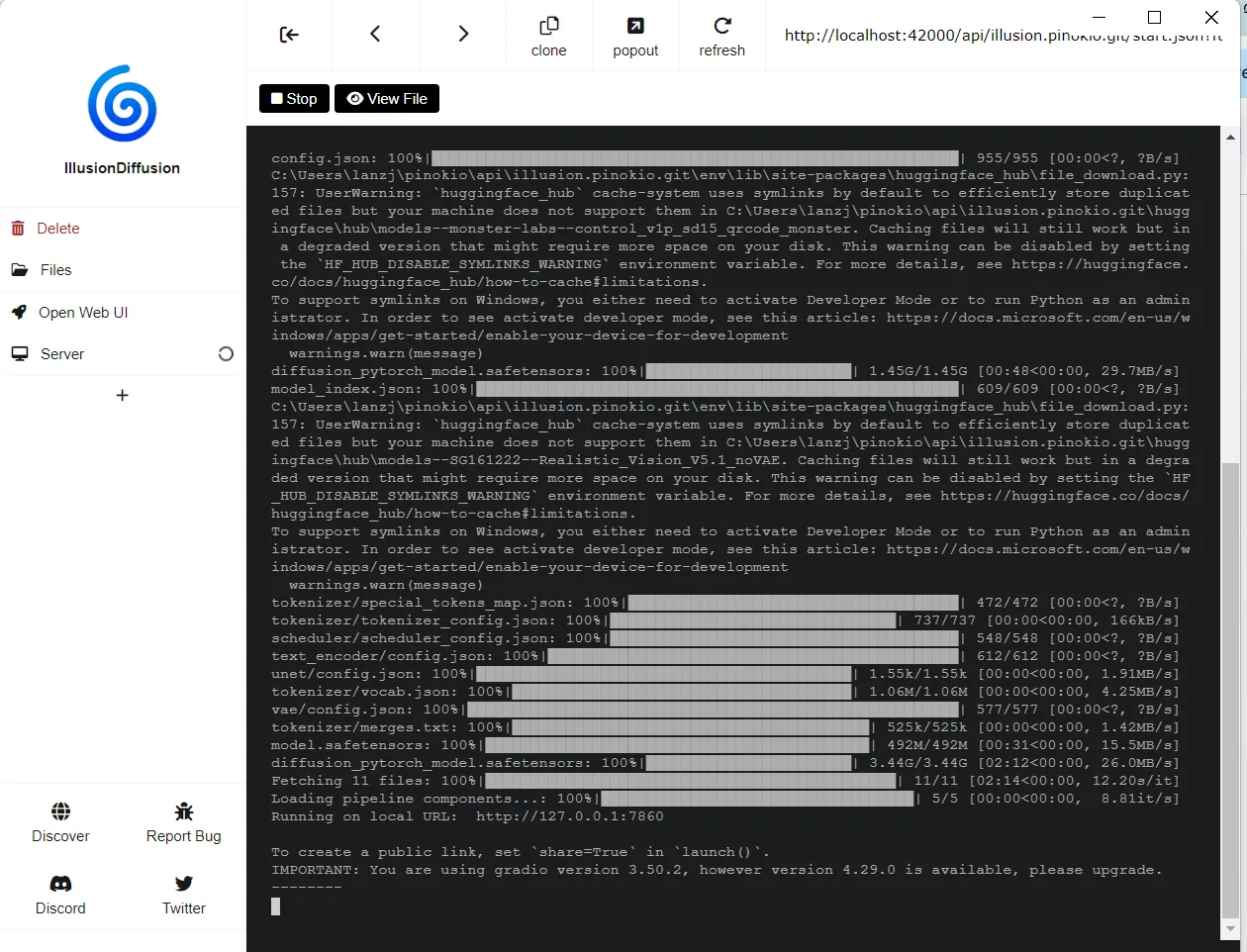
Now you can play around with your AI. Just launch it by clicking on the rocket button on the left of your screen labeled “Open Web UI” and it will run in Pinokio’s native interface. If you want to run your model in full screen mode with your preferred web browser, just click the “popup” icon on top of the screen and it will open a new tab in your computer's default web browser.
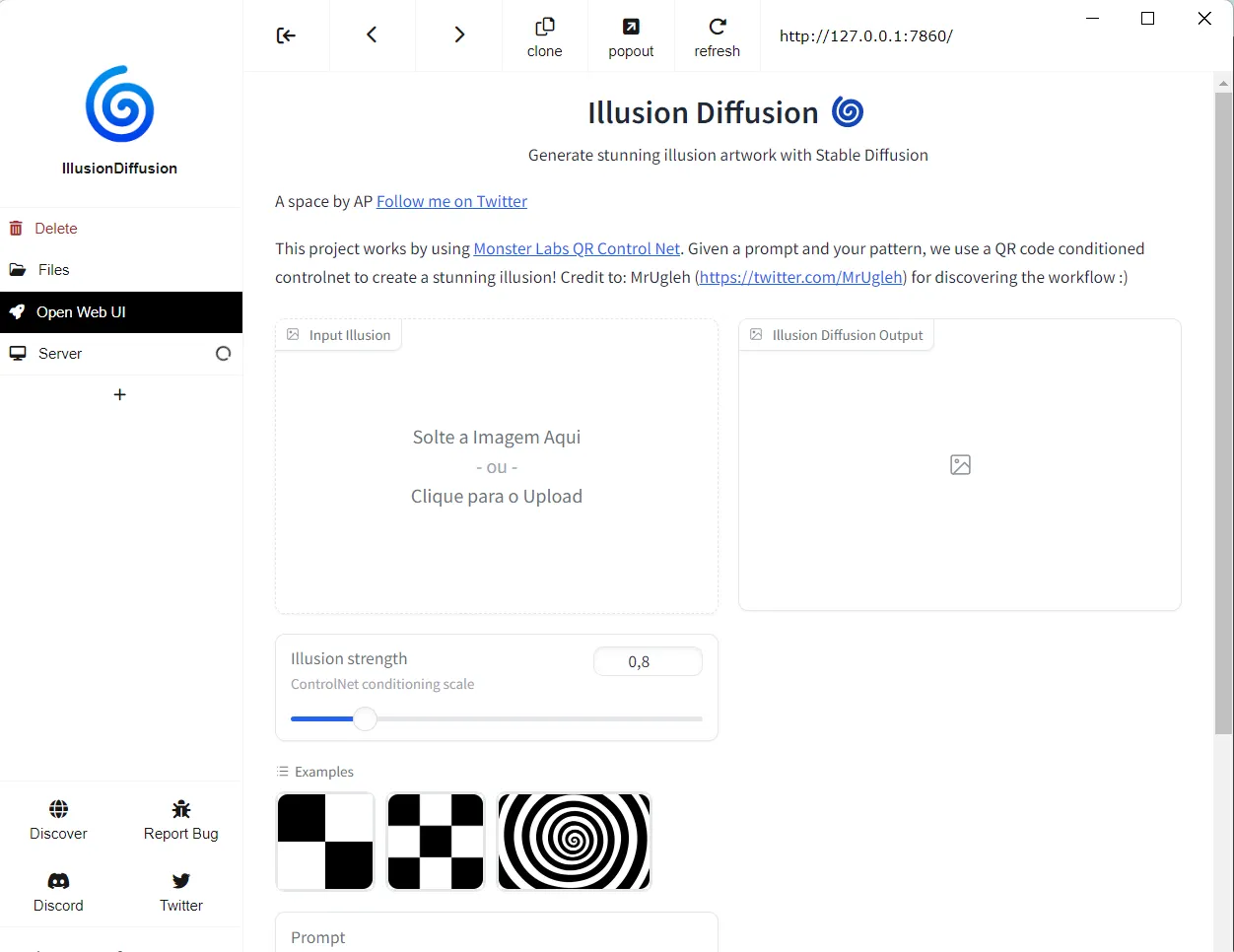
And there you go! Get crazy doing whatever you want with your new AI models.
Pinokio is a game-changer for anyone interested in AI. It simplifies the download and install process, making AI accessible and enjoyable. Whether you're a seasoned AI enthusiast or a newbie just dipping your toes into the world of artificial intelligence, Pinokio is a great tool for you.
Go ahead and give Pinokio a try. Who knows, you might just find your personal ChatGPT or MidJourney killer on your own computer.
Edited by Ryan Ozawa.


